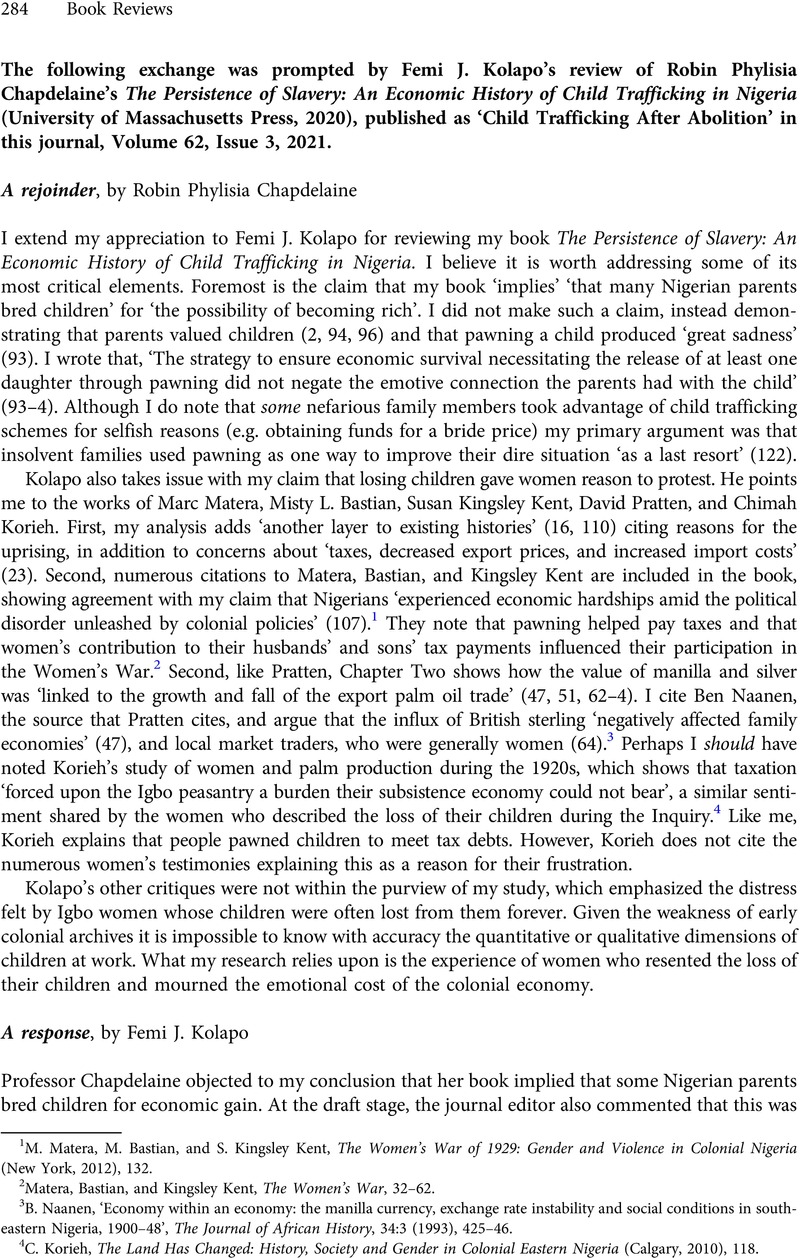No CrossRef data available.
Published online by Cambridge University Press: 23 September 2022

1 Matera, M., Bastian, M., and Kent, S. Kingsley, The Women's War of 1929: Gender and Violence in Colonial Nigeria (New York, 2012), 132CrossRefGoogle Scholar.
2 Matera, Bastian, and Kingsley Kent, The Women's War, 32–62.
3 Naanen, B., ‘Economy within an economy: the manilla currency, exchange rate instability and social conditions in south-eastern Nigeria, 1900–48’, The Journal of African History, 34:3 (1993), 425–46Google Scholar.
4 Korieh, C., The Land Has Changed: History, Society and Gender in Colonial Eastern Nigeria (Calgary, 2010), 118Google Scholar.
5 Pratten, D., The Man-Leopard Murders: History and Society in Colonial Nigeria (Bloomington, IN, 2007), 124–9Google Scholar.